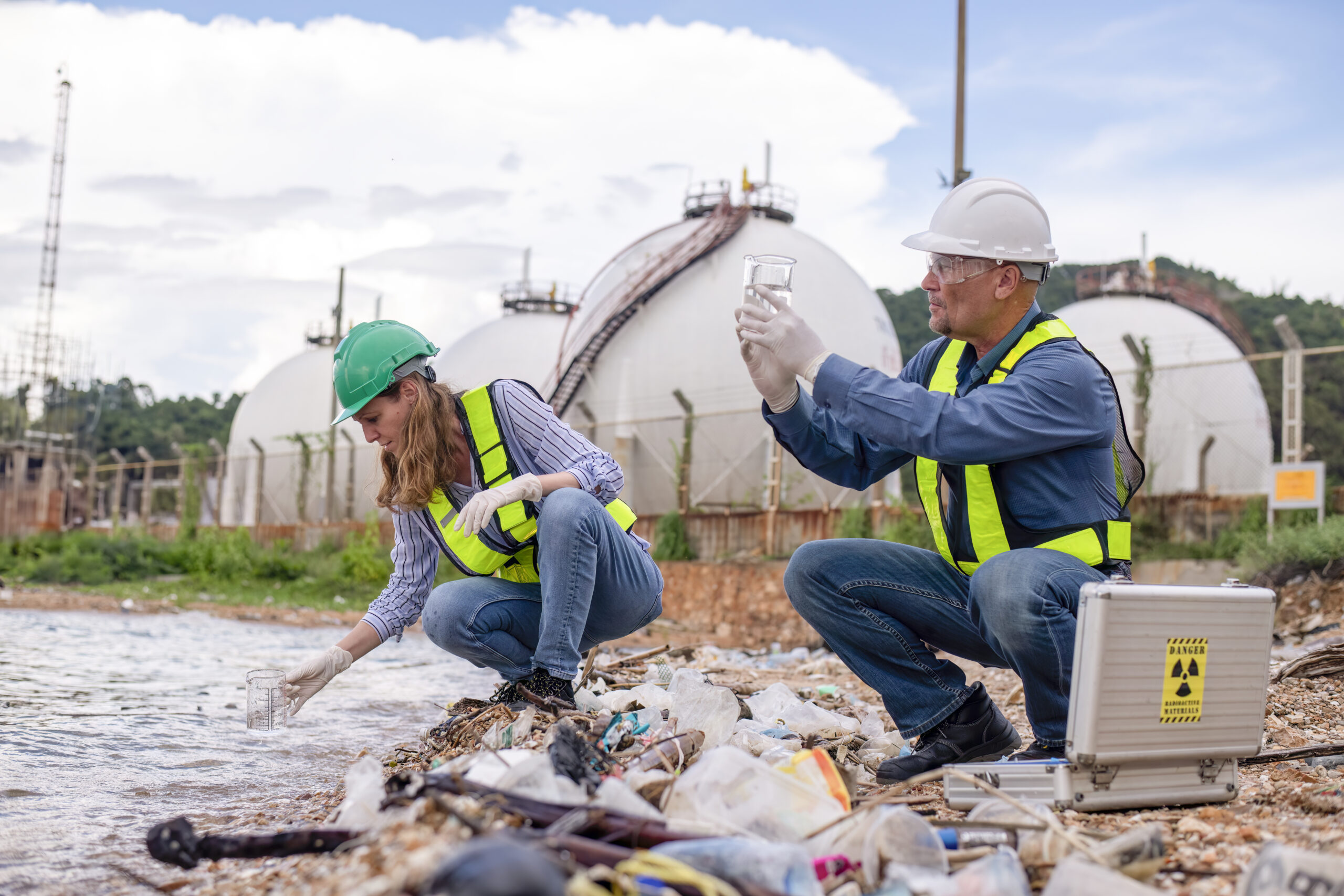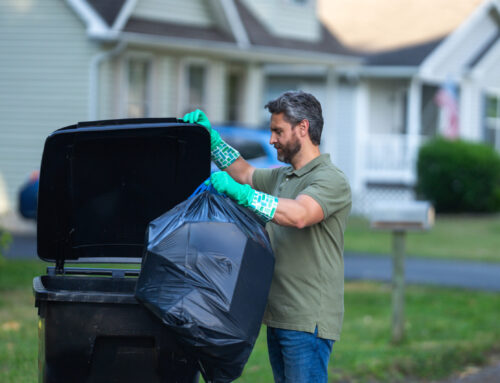
Every day, sanitation services are tasked with handling not only regular household waste but also materials that pose significant risks to human health, wildlife, and the environment. Known as hazardous waste, these materials require specialized handling, processing, and disposal methods to mitigate potential dangers. From toxic chemicals to electronic waste, understanding how sanitation services handle these materials reveals the complexities and importance of their work in waste management.
In this article, we’ll explore what constitutes hazardous waste, how sanitation services handle it, and why responsible disposal practices are essential for community health and environmental sustainability.
What Is Hazardous Waste?
Hazardous waste includes any material that poses a significant risk to human health or the environment due to its chemical properties. Some common types include:
– Chemical waste: Found in household cleaning agents, automotive products, and industrial by-products.
– Electronic waste (e-waste): Consists of discarded electronic devices like cell phones, computers, and televisions that may contain toxic substances like lead and mercury.
– Medical waste: Includes items like syringes, pharmaceuticals, and biological waste from hospitals and clinics.
– Pesticides and herbicides: Often used in farming and gardening, these chemicals can contaminate soil and water.
– Paints and solvents: Contains chemicals that can pollute the air and water if not disposed of properly.
Hazardous waste can be flammable, corrosive, reactive, or toxic. When mishandled, it can cause a variety of health problems, including respiratory issues, skin irritation, and long-term diseases, as well as environmental consequences like soil and water contamination.
The Role of Sanitation Services in Hazardous Waste Management
Sanitation services play a crucial role in identifying, collecting, transporting, and disposing of hazardous materials. Because these items can’t be disposed of like regular trash, sanitation workers are trained in handling them with care and ensuring they are taken to the proper facilities.
In many cities, sanitation services work in partnership with government agencies and specialized hazardous waste disposal companies to safely manage hazardous materials. From educating the public to following strict safety protocols, sanitation workers are on the front line of protecting both human health and the environment.
Identifying Hazardous Waste
One of the first steps in handling hazardous waste is identification. While some hazardous materials, such as paint or motor oil, are commonly known to be dangerous, others are less obvious. For instance, batteries, fluorescent bulbs, and certain cleaning agents are household items that contain hazardous substances and should not be disposed of in regular trash bins.
Sanitation services work to educate the public on what qualifies as hazardous waste and the importance of proper disposal. Some cities offer guides or information campaigns to help residents identify hazardous materials in their homes. Through public awareness programs, residents learn to separate hazardous waste from regular waste and recycle materials appropriately, which helps sanitation services manage these dangerous items more effectively.
Safe Collection and Transportation of Hazardous Waste
Once hazardous waste is identified, it must be collected and transported carefully. Sanitation services have strict protocols for collecting hazardous materials, which vary depending on the type of waste. Here’s a look at how different hazardous wastes are managed:
Household Hazardous Waste (HHW) Collection Days
Many sanitation services host periodic HHW collection events where residents can drop off hazardous materials. These events allow sanitation workers to gather dangerous items directly from the community, preventing them from entering landfills or recycling centers.
Specialized Containers and Trucks
Hazardous waste collection often requires specific containers that prevent spills, leaks, and chemical reactions. Sanitation workers use trucks equipped with secure, corrosion-resistant compartments for transporting hazardous materials to prevent exposure or contamination.
E-waste and Battery Recycling
Electronics and batteries contain heavy metals and other toxic materials that can be harmful if they leach into the soil. Sanitation services often set up e-waste drop-off locations or partner with e-waste recycling companies. These facilities dismantle electronics, safely remove hazardous components, and recycle valuable materials, like metals, that can be reused.
Medical Waste Management
Medical waste, including needles, bandages, and biological waste, is especially dangerous and must be handled with extreme care. Specialized sanitation services collect medical waste in containers that are puncture-resistant and tamper-proof to prevent accidental exposure. Medical waste is typically treated through processes like incineration or autoclaving, which eliminate pathogens and make the waste safe for disposal.
Handling Hazardous Waste at Disposal Facilities
Once hazardous waste is collected, it must be disposed of in a way that minimizes harm. The methods of disposal vary depending on the waste type, but all require specialized treatment:
Landfills for Hazardous Waste
Hazardous waste landfills are different from standard landfills. They have secure liners and barriers that prevent leaks and contamination. Some landfills are equipped with systems to monitor and contain any hazardous leachate (liquid that can drain from waste) to protect soil and water sources.
Incineration
Certain types of hazardous waste, like medical and pharmaceutical waste, are often incinerated to destroy harmful pathogens. Incineration also reduces the volume of waste, but it must be done under controlled conditions to prevent air pollution. Facilities equipped with advanced filtration systems ensure that emissions are safe and compliant with environmental regulations.
Chemical Treatment and Neutralization
Some hazardous chemicals can be treated and neutralized to render them non-toxic. For example, acidic or alkaline substances can be neutralized to a neutral pH level, making them safer for disposal. Chemical treatment is a complex process, but it helps prevent toxic reactions and minimizes risks associated with hazardous materials.
Recycling and Reuse
In some cases, hazardous materials can be recycled or repurposed. For example, e-waste components like metals and plastics are recycled, while used motor oil is often reprocessed for use in industrial applications. Recycling hazardous materials reduces the demand for raw resources and lowers environmental impact.
Challenges and Safety Risks Faced by Sanitation Workers
Handling hazardous waste is a demanding job that requires proper training, equipment, and a high level of awareness. Some of the challenges sanitation workers face include:
– Health Risks: Hazardous waste can release toxic fumes or cause injuries if handled improperly. Workers use personal protective equipment (PPE) to safeguard themselves, but prolonged exposure can still pose health risks.
– Accidental Exposure and Spills: There is always the risk of accidental exposure or spills, especially with reactive chemicals. Sanitation services have protocols in place for spill response and containment, but quick thinking and proper training are crucial in preventing accidents.
– Environmental Impact: Even with careful handling, hazardous waste can sometimes pose risks to the environment. If not properly contained or disposed of, these materials can leach into soil and water sources, causing long-term pollution.
Community Involvement and Proper Disposal Practices
For sanitation services to effectively handle hazardous waste, community involvement is essential. When residents understand the importance of disposing of hazardous materials responsibly, sanitation workers can perform their jobs more safely and efficiently. Local government and sanitation services offer information on hazardous waste disposal and host collection events to encourage responsible practices.
Residents can help by:
– Sorting Waste Properly: Separating hazardous waste from regular trash is a crucial first step in preventing contamination.
– Using Designated Drop-Off Locations: Instead of putting hazardous waste in regular bins, residents should use designated drop-off sites or attend local collection events.
– Reducing Hazardous Waste: Choosing eco-friendly or non-toxic alternatives to traditional hazardous materials, like using green cleaning products, helps reduce the amount of hazardous waste generated.
Keeping Communities Safe
Sanitation services play an invaluable role in managing hazardous waste, protecting human health, and preserving the environment. The process of handling hazardous waste requires careful planning, specialized equipment, and collaboration between sanitation workers and the community. By properly disposing of hazardous materials, educating the public, and implementing safe disposal practices, sanitation services help create cleaner, healthier neighborhoods. With continued support from the community and adherence to safe disposal practices, hazardous waste can be managed effectively, ensuring a safer future for all.
AAA Sanitation & Garbage Removal
79 Business Dr Ste A
Hull, GA 30646
(706) 543-7788
https://aaasanitationco.com/






Leave A Comment